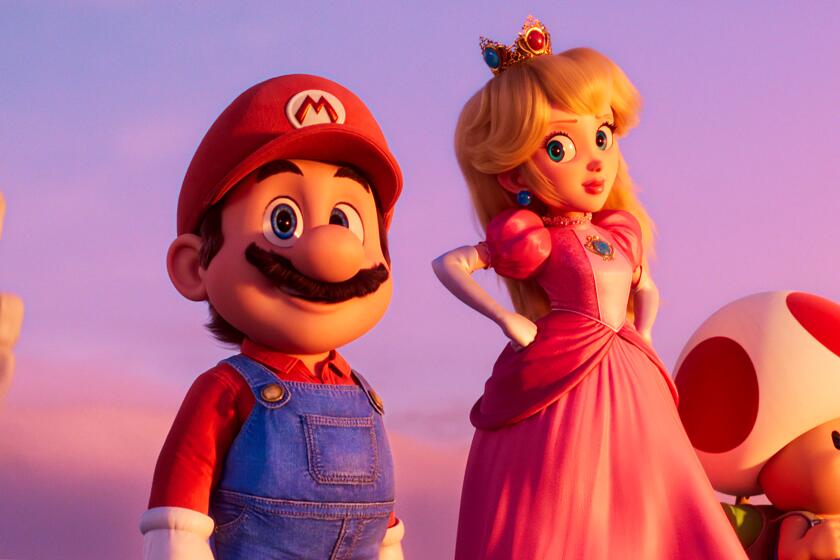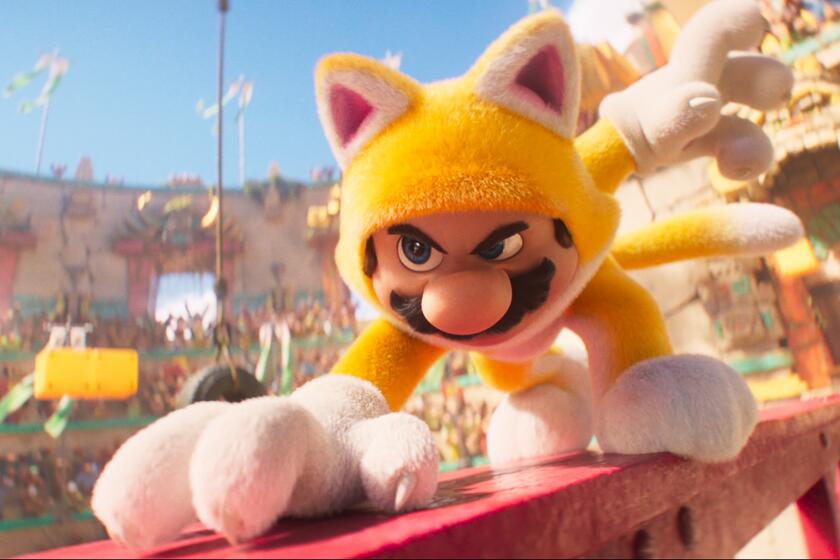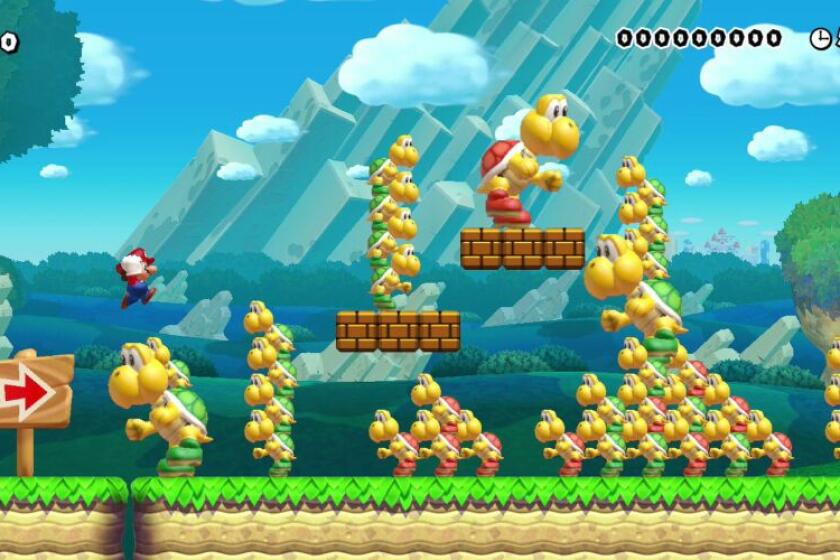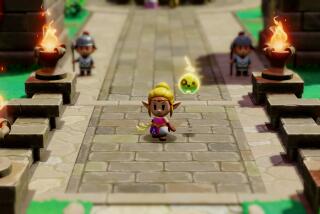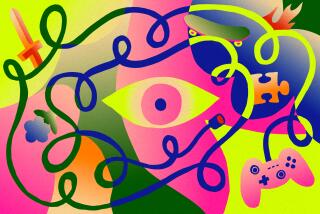Princess Peach started out as a boring damsel in distress. Times have changed
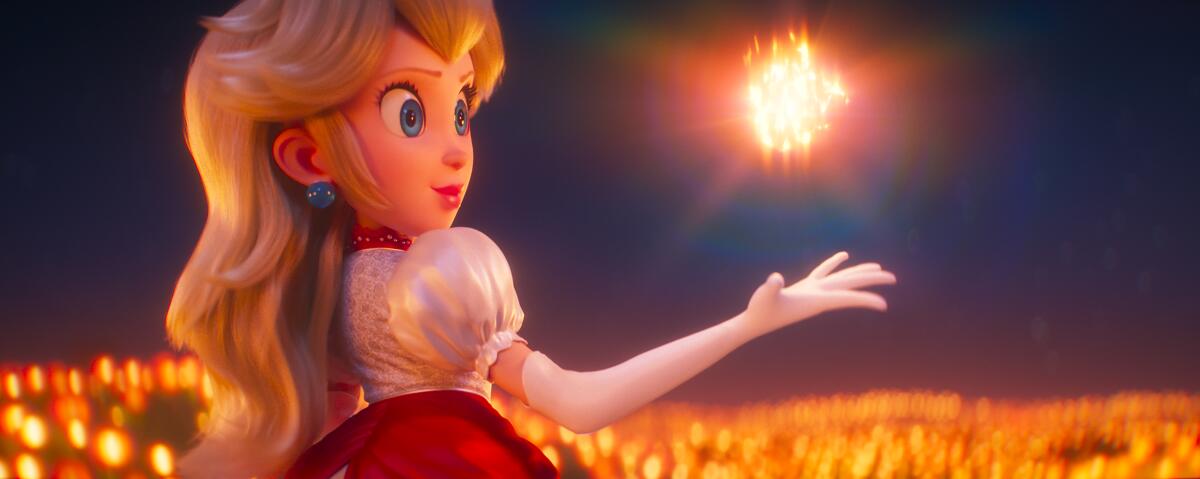
- Share via
In my earliest memories of Princess Peach, she is less a video game character than an elusive goal.
I must have been 5 or 6 when my parents got my siblings and me a Nintendo for Christmas: old enough to be excited for a video game console, but young enough that any game — including “Super Mario Bros.” — was an impossible challenge.
Still, I eventually made it through that dark and intimidating castle stage at the end of the game’s first world, where a curious mushroom-like being thanks you for the rescue but informs you “our princess is in another castle.” Introduced to U.S. gamers as Princess Toadstool, she was never in any of the castles I could make it through on my own back then.
In “The Super Mario Bros. Movie,” though, the princess is in the very first castle Mario enters. Flipping the script on their traditional video game dynamic, in the film, now in theaters, it’s Mario that needs Peach’s help, and the beloved ruler is a guide and formidable ally rather than the kidnapped damsel in distress.
‘The Super Mario Bros. Movie,’ starring Chris Pratt, is mildly amusing, swift, noisy and unrelentingly paced.
Created by master game designer Shigeru Miyamoto for the first “Super Mario Bros.” (1985), Princess Peach has often been relegated to the role of catalyst, launching Mario’s adventures in the core games of the series. Though there have been some outliers — like 1988’s “Super Mario Bros. 2” — the “Super Mario” formula is simple: Peach gets kidnapped and Mario has to save her.
Over the years, Princess Peach has achieved playable character status more frequently, usually in spinoffs like the “Mario Kart” series of racing games, the “Super Smash Bros.” series of fighting games and various “Mario”-branded sports games.
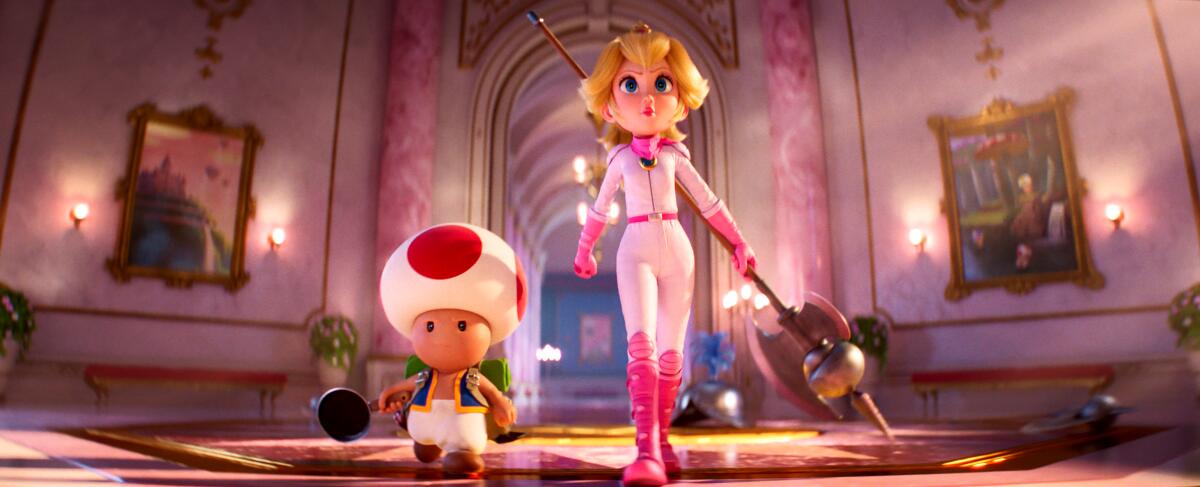
Perhaps as a result of her usual second-class status in the “Mario Bros.” universe, I always hated when people tried to make me play as Peach — even in “Super Mario Bros. 2,” where her ability to briefly float makes her the superior choice.
Long before I became aware of things like the “damsel in distress” trope, I knew that I did not want to be Princess Peach. In fact, I did not want to be a girl at all, if being a girl meant being like Princess Peach.
Games like “Super Mario Bros.” prioritize gameplay, meaning the point is to enjoy the experience of making it through various levels, unlocking surprises along the way. As a result, there is minimal plot and the characters have limited backstories; they are instead designed as avatars on which you can project your own ideas.
We sit down with ‘Super Mario Bros.’ creator Shigero Miyamoto ahead of the opening of the new animated film.
For me, that meant Mario, as the primary playable character, was the relatable, aspirational one — a heroic little dude who gains powers by coming into contact with various items and ultimately saves the day. Luigi, Mario’s brother and the other playable character from the beginning of the “Super Mario Bros.” franchise, is like Mario but less exciting. Waiting for your turn as “Player 2” is agony! Plus, as the oldest child, I was not going to be anybody’s little brother.
The princess was even worse. All she did was wait to be rescued. And if, like me, you never made it to the end of “Super Mario Bros.,” you never even got to see her. Even if you did, all one could glean about her existence was that she wore a dress and did nothing. Not exactly the backstory of an iconic character. (I also considered having to wear a dress a form of punishment, so the association did not help her cause.)
Now, with the benefit of hindsight, I can understand my aversion to Peach and her pink dress — and have even learned to appreciate her.
After all, as a kid, I did not have the language to convey why gender, or the gendered categories others tried to force me into, felt so constricting. The only way to push back at the time was to reject femininity, or objects I associated with femininity, altogether, including the most feminine character I knew: Princess Peach.
With the games’ post-8-bit evolution, the “Super Mario Bros.” characters started to manifest distinct personalities — Mario is cheery and tenacious; Luigi is a bit of a scaredy cat — and Peach no longer seems so dull, her supposedly gentle demeanor marked by her fair share of quirks. Peach has been shown wielding her parasol as a weapon and initiating mid-battle tea breaks in installments from the broader world of “Mario” games and crossovers. She’s sometimes even blasé about her repeated abductions.
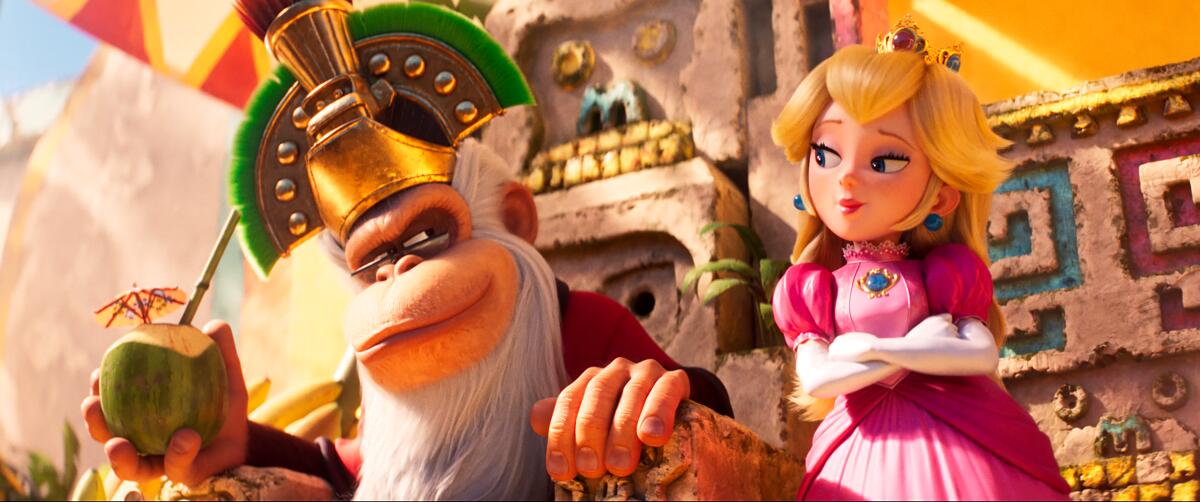
“The Super Mario Bros. Movie” draws from and occasionally subverts these familiar characteristics. Its Peach is more an empowered princess imagined for the current age. She’s a respected ruler willing to engage in diplomacy as much as battle in order to protect her subjects and her Mushroom Kingdom. She’s not at all intimidated by Bowser, a fire-breathing bully with a big army. And not only has she already mastered all the skills Mario needs to learn in order to survive his confrontation with their reptilian foe, she can do everything while wearing heels. This Peach is who you want saving you.
It also helps that I now understand the gender you are assigned at birth does not have to be your destiny: Gender is a spectrum and there is no right or wrong way to express it, no matter what culture or “tradition” or even legislation tries to tell you.
Thirty years ago a plump little plumber in red overalls revolutionized gaming.
That hasn’t made it easier to stomach “Super Mario Bros.” and other popular media that reinforce the idea that feminine characters are weak objects of desire, mostly kept around to be kidnapped or saved. And we shouldn’t be appeased that the alternatives offered to this narrative are predominantly stories where women’s strength comes at the expense of their femininity or with the expectation to ooze sex appeal, either.
But it has made it easier to embrace Peach and her signature pink dress. You still won’t ever catch me in one, but that’s not a knock on the princess — it just means it’s not for me.
Plus, she seems plenty comfortable in it in “The Super Mario Bros. Movie.” It certainly doesn’t sex her up or slow her down. So let the world of “Mario” keep its high-femme icon dressed to the nines.
As long as she’s the one doing the rescuing.
More to Read
Only good movies
Get the Indie Focus newsletter, Mark Olsen's weekly guide to the world of cinema.
You may occasionally receive promotional content from the Los Angeles Times.
